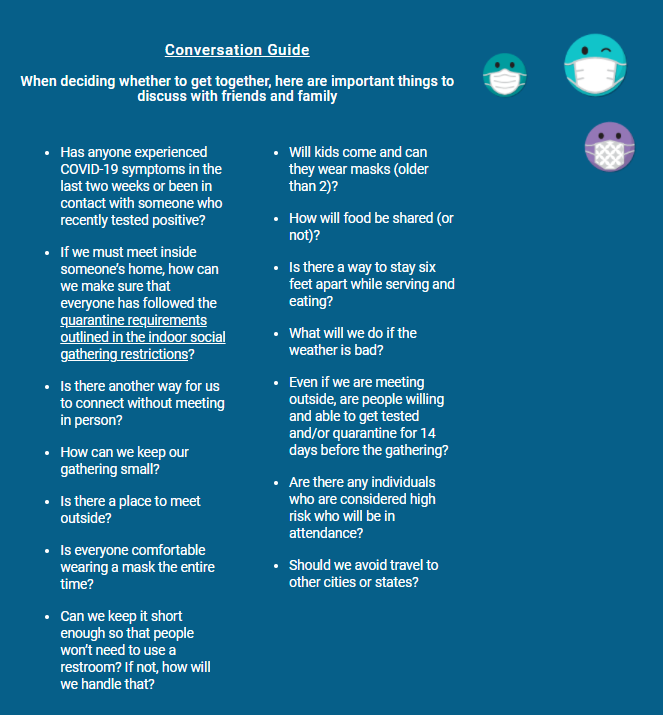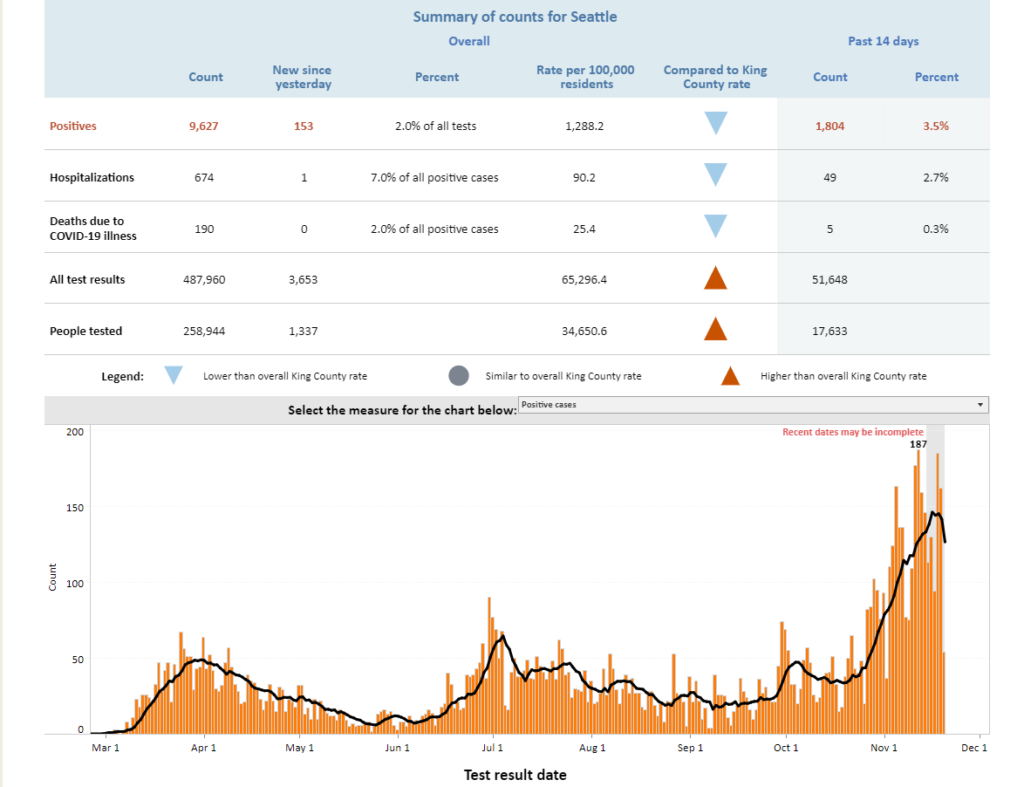Final Budget – Positives and Negatives 💵
[NOTE:
- More on the Budget: The blog post below discusses the final results of the Fall 2020 budget process (for 2021). For the separate blog post that details the beginning and middle of the process, CLICK HERE.
- Public Safety: While public safety is a key component of our city budget and is discussed below, you can also view my separate posts about reimagining and revamping policing in Seattle by CLICKING HERE ]
Friends and Neighbors,
On Monday, November 23, 2020 your City Council adopted the 2021 budget for city government.
In a statement released to the media shortly after our Budget Committee last week, the other eight Seattle City Councilmembers celebrated amendments made to Mayor Durkan’s $6.5 billion proposal. Finalizing a budget feels like an achievement, especially given this year’s challenges: a pandemic, a recession, a racial reckoning, the homelessness crisis, the West Seattle bridge closure, and an antagonistic Trump Administration.
However, I do not feel like celebrating. I believe the amended budget has substantial negatives: it shortchanges our bridge infrastructure, fails to revamp public safety with a plan, and reduces accountability for our response to homelessness—all while giving city government a pay increase instead of investing more in our most marginalized communities. Ultimately, I voted Yes for the final package in this historic moment for reasons I’ll discuss in this newsletter. I believe it’s important to acknowledge both the positives and negatives of this year’s budget.
I appreciate the hard work the Mayor, our City departments, our City Council staff, and our Budget Chair have invested into this 2021 budget. The law requires us to craft a balanced budget covering 40 departments and 12,000 government employees under a tight deadline and we had difficult choices to make. People are yearning for functional government. If the budget does not pass, nothing gets done. No budget is perfect, and this budget is no exception. My constituents have diverse and conflicting views. A budget with positives and negatives is a natural result.
Despite the drama during each Fall budget season, the Council typically leaves intact over 90% of the budget exactly as proposed by the Mayor. This budget is no different, re-allocating less than 10% of the more flexible $1.5 billion General Fund. (When including the $6.5 billion from all budget funds, the Council’s changes amount to less than 3%.) Many of the changes are made possible by a new revenue forecast received in the middle of the process (another common occurrence) that enables the Budget Chair to dole out additional dollars to the various Councilmember requests. To her credit, the Budget Chair transferred much of the additional funding to rebuild our Rainy Day Funds.
- For my brief Op Ed on this budget process published by the Seattle Times, November 23, 2020, CLICK HERE.
- For the Budget Committee meetings with votes on key amendments and final packages:
- penultimate Budget Committee on Thursday, November 17, 2020, CLICK HERE.
- final Budget Committee on Monday, November 23, 2020, CLICK HERE.
- full City Council meeting Monday, November 23, 2020 that adopted the final budget for 2021, CLICK HERE.
Before we delve deeper into some negatives of this budget, here are some of the positives:
- Funding for a Tiny Home Village in the University District and more dollars to the Regional Homelessness Authority. Given the COVID-19 pandemic and the ongoing homelessness crisis, I agree that well-organized tiny house villages can be a cost-effective intervention in conjunction with case management and a performance-based contract with the Human Services Department (HSD). We have seen a sharp rise in encampments in D4, done the legwork of finding a suitable short-term location for a Tiny House Village, and wish to move expeditiously to address this urgent concern of finding shelter and housing compliant with CDC guidelines. In addition, this budget finally transfers substantial sums away from city government operations to the new Regional Homelessness Authority. Regional problems require regional solutions and, considering the City of Seattle’s spotty track record in responding to homelessness, the forthcoming regional operation is a welcome change.
- Clean Cities Initiative. CLICK HERE to read an overview of this proposal to surge the clean-up of litter and illegal dumping. Since the beginning of the pandemic, through a combination of increases in trash at parks, reduced staffing due to COVID-19 safety, and a lack of volunteer opportunities for residents, the City faced significant challenges addressing litter and illegal dumping remediation. Data from Seattle Public Utilities’ (SPU) Illegal Dumping program shows a 195% increase in the volume of material collected from Q2 to Q3 2020. Departments, including SDOT, Parks & Recreation, Office of Economic Development, and SPU, will create a comprehensive plan to address the increase of waste challenges across the City which would stand up a rapid response team within Seattle Parks and Recreation to address trash in parks, and make infrastructure improvements in key parks to improve overall cleanliness. The proposal increases the purple bag program, the number of needle disposal boxes in the city and would expand the graffiti ranger program. Funding would also be directed to business districts throughout the city to increase contracted cleaning in their neighborhoods such as the University District. In addition, SPU would more than double the number of trash pickup routes which provide twice weekly collection of trash and bulky items in public rights of way which should greatly benefit District 4.
- Funding to benefit Magnuson Park. We preserved the vital work on the sorely needed sidewalks and crosswalks to safely connect Magnuson Park to the surrounding communities along Sand Point Way NE. These sidewalks and crosswalks are needed now to meet the goals of three city government initiatives: Vision Zero, our Pedestrian Master Plan, and our Safe Routes to School program helping to safely connect dozens of children to Sand Point Way elementary school. It will also help to connect the scores of cyclists biking from the Burke-Gilman Trail to Magnuson Park. This is about safety for pedestrians, it’s about safety for cyclists, it’s about connecting 850 low-income and BIPOC Magnuson Park residents to their neighbors, and it’s about safely enhancing access to the regional asset that is Magnuson Park. These are community-driven projects supported by all those neighborhoods there as well as the Magnuson Park Advisory Committee. In fact, diverse and collaborative groups have been advocating for these pedestrian safety projects for years–I first learned about this project years ago when I was a Legislative Aide. We also secured funding for a feasibility study for a new pool at Magnuson Community Center. Data reveal children of color have less access to parks and other recreational alternatives that enhance self-confidence, allow for creative expression and the development of social and emotional bonds that strengthen community cohesion.
- Initial funding for bridge maintenance. While we faced setbacks, my office successfully used data to champion this back-to-basics priority and secured $4 million in additional funding to benefit the entire city despite the budget deficits. In our District 4 the 15th Ave NE bridge (over Cowen Park) was seismically strengthened and Fairway Ave Bridge is being rebuilt. But the City’s bridge audit noted that the University Bridge, connecting the U District to Eastlake and downtown, is among the four worst bridges in the city in terms of its physical condition. I expect SDOT to use some of the additional dollars to examine the University Bridge and craft a plan to keep it safe. To see our audit on bridges, CLICK HERE. For our proposal to allocate even more funding to bridge maintenance that was narrowly rejected by other Councilmembers, CLICK HERE.
- Internet for All. We inserted our Internet for All initiative into the budget document to increase accountability to follow through on the Internet for All Action Plan’s eight strategies. The new section of the budget book will highlight for the general public that we unanimously adopted Resolution 31956, which was co-sponsored by Council President Gonzalez and Councilmember Juarez, in July 2020. This Resolution led to the Executive’s presentation to City Council last month of the Internet for All Action Plan. The next report from Seattle IT to the Transportation & Utilities Committee will be in the first quarter of 2021 and will summarize progress to increase access and adoption of affordable and reliable internet service, including setting up dashboards to track results.
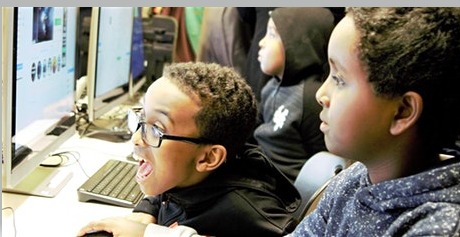
- Spurring protection of Seattle’s Trees. Washington is the “Evergreen State” and Seattle is the “Emerald City.” Trees provide numerous benefits including carbon sequestration, absorption of rainwater to reduce harmful runoff into Puget Sound and Lake Washington, shade for cooling during the warmer months, and proven health benefits. The bigger the tree, the better. As we take a long overdue, serious look at racial injustice issues, we know some communities of color have fewer large trees and are having them removed more often. As far back as 2009, our City Auditor determined that fractionalized management of trees and urban forestry issues was a major problem for Seattle and recommended consolidation. Instead, the City for eleven years has continued to try to make a multi-departmental approach to tree management work. During that time, I’m concerned we are seeing a declining tree canopy and loss of numerous large trees. Decentralization urban forestry management had its chance, but it does not work. Our budget action, approved by my colleagues, will have the Executive produce a plan for Council consideration that could rationalize and consolidate protections of Seattle’s trees, with a preference for an agency focused on the environment. To read the official budget action, CLICK HERE
- Using data to prevent displacement of Seattle residents. I support creating more affordable housing throughout Seattle and, in addition to supporting new construction, we also want to ensure a net GAIN in the total amount of affordable housing. So we need to track and measure both new and existing affordable housing. When adopting major new land use changes or moving ahead with new construction projects, we need to ensure we have a detailed and accurate system to track the potential loss or demolition of existing naturally occurring affordable housing—and the displacement of low-income households. This will enable us to better quantify our new and existing stock of affordable housing. This action is needed to make sure we actually get the data we need to implement Resolution 31870, section 2.G. and Executive Order 2019.02. The data on displacement of low-income households needs to include rent levels and supply of naturally occurring affordable housing. We need to better understand the NET impacts. My colleagues adopted my budget action requiring a report on these important issues next year. Getting this information will provide a more comprehensive picture of our City’s affordable housing stock, so that we can do more to prevent economic displacement in Seattle. To read the official budget action, CLICK HERE.
- Keeping utility rates as low as possible: SPU and Seattle City Light continue to work hard to forgive late fees and defer rate increases (except for the unfortunate wastewater rate increase from the King County Council). Council approved my request to study wastewater rates and changes in the rate-setting process, including the costs and benefits to the City and its ratepayers of various changes in wastewater treatment governance, such as potential City ownership of treatment facilities to control costs to you, the ratepayers. To read the official budget action, CLICK HERE.
- 45th Street I-5 overpass pedestrian and bike safety improvements. There are only two east-west crossings of I-5 between 65th/Greenlake and North 40th Street: NE 45th and NE 50th Streets. Both are heavily traveled by cars, and 45th by many buses, pedestrians, and bicyclists. Both 45th and 50th are very difficult and dangerous for non-motorized users. As a result, the University and Wallingford communities have advocated for improvements for many years. Unfortunately, the bridge itself is a Washington State DOT asset, making it difficult for our Seattle DOT to implement fixes. Solving the problem has become more urgent as the new Sound Transit Link station in the U District prepares to open in 2021. SDOT completed some initial design work in coordination with WSDOT, but it lacked funding to implement. Community leaders and transportation safety advocates worked with my office to insert $400,000 into the 2021 budget, so that construction of the improvements on the I-5 overpass are possible now. To see the official budget action, CLICK HERE.
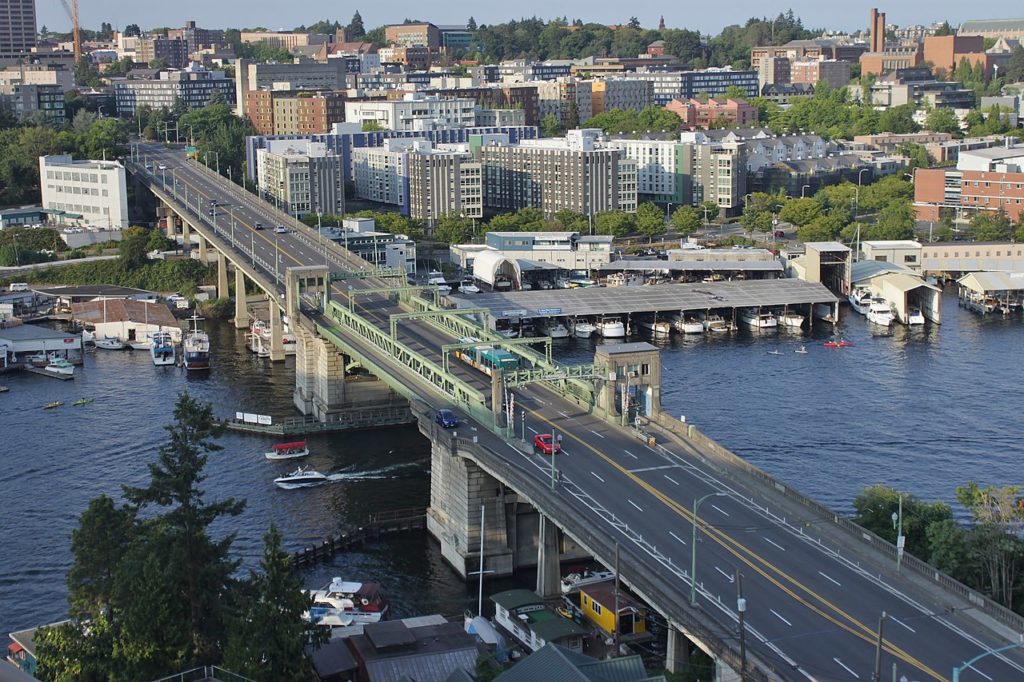
The University Bridge which connects the U District and Eastlake in District 4 was among the bridges ranked in “poor” condition along with the Magnolia Bridge, 2nd Avenue South extension, and the Fairview Avenue Bridge (which is being reconstructed). This budget has both positives and negatives for bridges.
I also want to enumerate my concerns with this budget. Overall, I believe the City Council deviated too far from our Mayor’s original, sensible proposal and also failed to invest sufficiently in our city’s aging infrastructure.
- Public safety: The budget as amended by Council unfortunately cuts police officer positions drastically before there is a community-driven plan and proven alternatives in place. While the Council approved my request to study the impact on response times to 9-1-1 priority one emergency calls, this will be after-the-fact instead of careful upfront planning. I strongly support more police reform and effective alternatives to traditional policing such as sending mental health professionals to help people in mental health crisis. But we need the plans in place first. Even after a Seattle Times analysis indicated our police department has fewer officers per capita than other cities, and after we learned highly trained officers are leaving at a faster rate, the Council chose to permanently eliminate police officer positions without first finishing the formal community input processes created by the Council and Mayor. The budget also sidesteps the real issue: the urgent need to revamp the unjust, inflexible, and expensive police union contract. Redoing that contract is how we can save money, improve discipline, honor good work of first responders, and deploy unarmed professionals for lower priority calls to reduce harm. “Police contracts are one of the keys to police reform,” said Community Police Commission Co-Chair, Reverend Aaron Williams, at my Budget Town Hall. “When you’re talking about changing anything from the discipline of officers to them receiving pay, it all comes back to contracts.” Moreover, expanding accountability reforms requires ample staffing for supervision and community policing. Yet Council’s amendments cement in a sharp reduction in officers before proven alternatives are in place. I’m concerned the remaining officers will be stretched thin and responding late. Our former Police Chief Carmen Best was clear: “I do not believe we should ask the people of Seattle to test out a theory, crime goes away if police go away, that is completely reckless.”
- Reduced accountability for homelessness response: At a time when homelessness appears to be growing, a majority of my Council colleagues unfortunately used the budget to dismantle our city’s interdepartmental Navigation Team that engages with unauthorized homeless encampments. Instead, I believe we need to allocate more resources to our Human Services Department to track and evaluate the effectiveness of such changes, so we can ensure we are truly helping people.
- Pay increases to city government rather than funding other priorities: While thousands of people live in tents and tens of thousands are unemployed during this pandemic-driven economic recession, your city government is giving itself $40 million in pay increases. Future city government contracts should encourage a sensible renegotiation of planned pay increases whenever City Hall faces recessions and deficits, so we have the flexibility to redeploy more dollars to the most marginalized communities.
- Funds supervised drug consumption services. I voted against this funding because it will have the net impact of funding a safe drug consumption site, even though it would be housed in an existing facility. After researching this issue and touring the injection facility in Vancouver, BC, I believe we should instead provide more resources for rehabilitation and prevention services.
- Neglect of Seattle’s bridges: I am thankful to voters who approved transit funding to maintain extra bus service. Now let’s protect the bridge network those buses rely on to safely connect us. The cracking and closure of the West Seattle Bridge should have been a wake-up call. The audit of all Seattle bridges I requested confirmed many bridges connecting our communities need much more maintenance. Yet this budget includes far less than the minimum dollars needed to maintain our city’s bridges. I had submitted a request to fund another $24 million, but the Budget Chair’s package added only $4 million. Councilmember Herbold, Councilmember Lewis, and I (supported by Councilmember Juarez) put forward a proposal to fund bridge maintenance with Vehicle License Fees, but the other five Councilmembers voted to delay this urgent investment. In a city defined by waterways and ravines, another forced bridge closure will stall multiple modes of transportation and our local economy. You can read the Seattle Times editorial that critiques the Council’s action by CLICKING HERE.
TRANSPORTATION SOLUTIONS
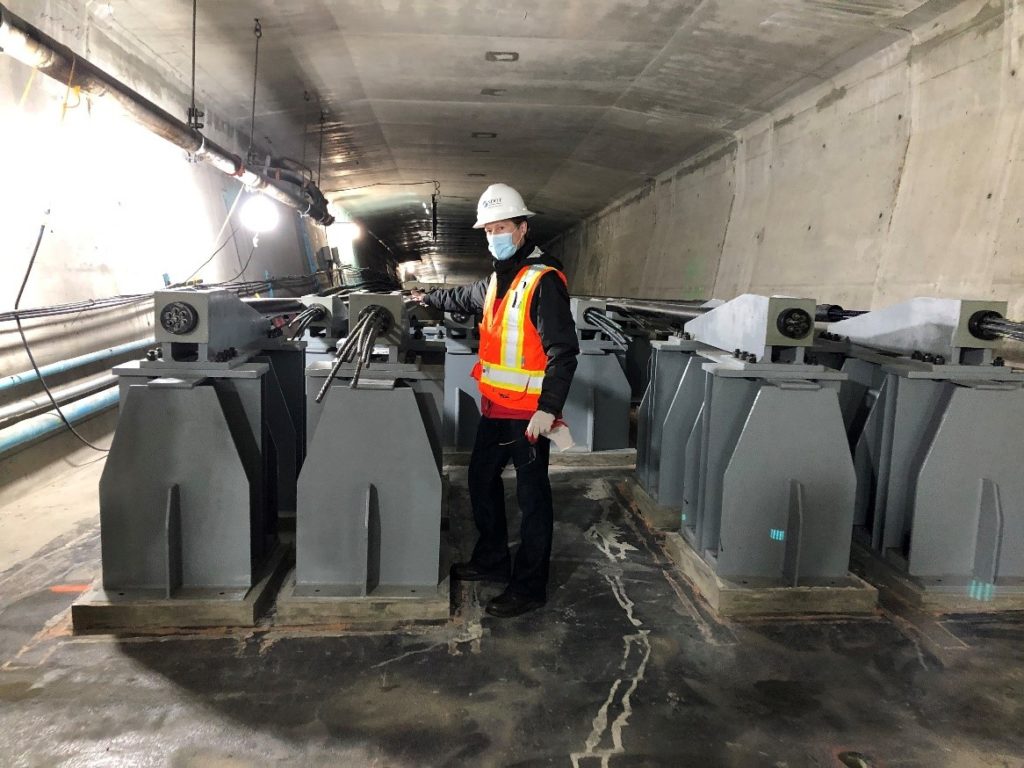
As Chair of the Transportation Committee, I ventured inside the West Seattle “High” Bridge last week to view the stabilization solutions being installed by SDOT’s engineers and contractors. Mayor Durkan recently announced plans to repair the bridge, which has been closed since March due to cracking.
Each of the nine councilmember chairs a committee so we distribute the responsibilities of overseeing different parts of your city government and its $6.5 billion budget. Appointed as chair of the Transportation & Utilities Committee in January 2020, I often provide updates on that committee’s activities.
West Seattle Bridge Decision:
Repair Option Wins
Last week, Mayor Durkan announced her decision to REPAIR the West Seattle Bridge, which I supported after careful consideration. The sudden closure of the West Seattle “High-Rise” Bridge in March 2020 has been a major challenge for Seattle and Washington State. Even though the West Seattle Bridge is not in Seattle’s District 4, I provide periodic updates on the closure, stabilization, and other issues impacting that vital bridge. It is an infrastructure asset vital not only to the 100,000 people of West Seattle but also to the entire region, especially as it impacts the economic engine that is the Port of Seattle.
Here is the statement I released after the Mayor’s decision to repair now (instead of the more costly and time-consuming option of replacing the bridge).
“After consulting technical experts, Seattle residents, local businesses, and the Port of Seattle, I want to thank our Mayor for her careful and thorough consideration of how best to move forward safely and effectively so we can quickly restore this vital infrastructure. After studying the various choices, I agree with Mayor Jenny Durkan that immediate repair of the bridge is the best choice so we can quickly and safely restore mobility to our region’s bridge network. Repairing the bridge now still keeps open the long-term solution to plan and fund a methodical replacement in the future and to coordinate with increased transit options. I believe the cracking and closure of the West Seattle Bridge must be a wake-up call to take better care of all our aging bridges with more investment in maintenance to keep transit and freight moving throughout a city defined by its waterways and ravines. After being appointed to Chair our City’s Transportation Committee earlier this year, I remain committed to work with Mayor Durkan, our Seattle Department of Transportation, our Port of Seattle, the rest of the City Council, and Seattle residents to make sure we honor this commitment to our bridge infrastructure and get this done.”
For more info and to check ongoing updates on the West Seattle Bridge, CLICK HERE.
Funding for Transportation Solutions
On the theme of the city budget—and your tax dollars—we are fortunate to have many sources of funds to support all modes of transportation in Seattle. In addition to benefiting from Sound Transit light rail (two more stations opening up in District 4 thanks to the 2008 Sound Transit 2 measure) and King County metro (buses), Seattle has the following sources of transportation dollars:
- City Budget: Each year, your City government allocates hundreds of millions of operating and capital dollars from various sources for improvements to Seattle streets and sidewalks to benefit all modes of transportation. This includes funding from the voter-approved Move Seattle Levy (2015-2024).
- Reserves from the former 6-year Seattle Transportation Benefit District (STBD) measure approved in 2014 (approximately $25 million). We will get input from the Transit Advisory Board, Transportation Equity Workgroup, Move Seattle Levy Oversight Committee, and other city residents concerned about reliable transportation in order to spend these reserves responsibly.
- New 6-year STBD approved by voters November 2020: approximately $32 million for 2021 and $41 million for 2022. While the numbers have changed for the first year — with more money recently allocated to transit service — this bar graph from the Seattle Times provides a picture of how dollars could be allocated in future years (not including the reserves from the former STBD mentioned above):
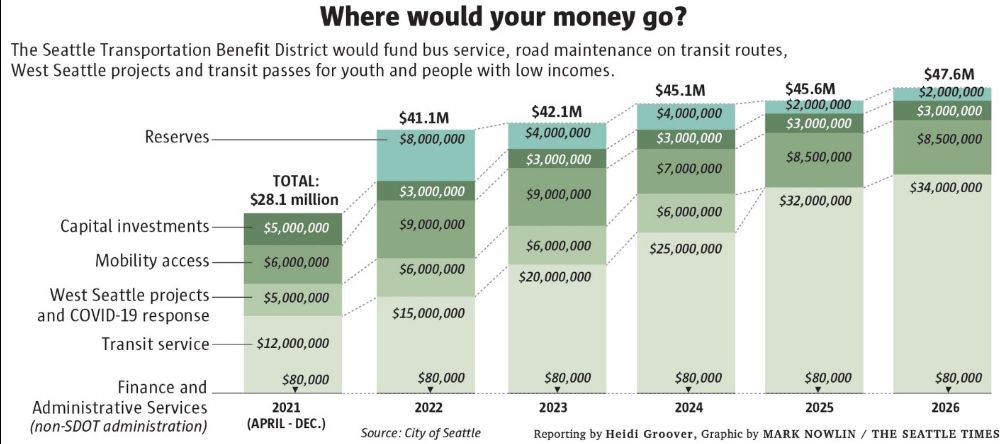
Source: Seattle Times, November 3, 2020
The Council adopted my budget action to ensure the allocation of the $5 million shown in the graph for 2021 to “infrastructure maintenance and capital improvements” as authorized by the measure approved by voters. The allocation toward capital drops in future years so that we can allocate more toward transit service as we recover from the pandemic and recession and demand increases. The Council’s budget action is available HERE.
- Vehicle License Fees: After the Supreme Court overturned Tim Eyman’s Initiative 976 as unconstitutional, the Council was able to tap again the vehicle license fees (VLF) as a source for transportation projects and programs, including bridge maintenance. Currently we pay $80 to the City and that was going to drop to only $20 because a $60 VLF approved by voters in 2014 is expiring. As allowed by State law, the Council this week adjusted it to $40. That incremental $20 VLF will raise $3.6 million in 2021 and $7.6 million per year when there is a full year of funding starting in 2022. The reasonable decision this week by our Mayor to repair and maintain the existing West Seattle bridge underscores the need for more steady funding for bridge maintenance throughout Seattle to honor our recent audit of bridges. We could have immediately dedicated the funds for bridge maintenance. Unfortunately, a majority of the Council had supported the decisive proposal to use the VLF dollars that Councilmembers Herbold, Lewis, and I advanced with the support of Councilmember Juarez. Despite the disappointing delay, I am hopeful the additional process will lead to a robust increase in funding for bridge safety from several sources, which would benefit all modes of travel and keep our economy moving. For a Seattle Times article explaining the fee, CLICK HERE.
Street Upgrades in District 4
 NE 43rd Street and University Way (”The Ave“): The intersection of The Ave and NE 43rd Street is scheduled to be closed November 21-26 as part of the 43rd Street Improvement Project by the Seattle Department of Transportation (SDOT). The Ave between NE 42nd and NE 45th Street will be local access only, with no through traffic. Customers should still be able to access all businesses, and the sidewalks will be open to pedestrians. Metro buses 45, 73, and 373 will be rerouted off The Ave for the duration of the closure. Contact SDOT at 43rdimprovements@seattle.gov with any questions. I know these closures have been hard on our local small businesses and I have asked our Office of Economic Development to develop a financial assistance program when SDOT projects cause substantial disruption to struggling small neighborhood businesses. In the meantime, there is a COVID stabilization grant program with applications due Nov 30 (CLICK HERE).
NE 43rd Street and University Way (”The Ave“): The intersection of The Ave and NE 43rd Street is scheduled to be closed November 21-26 as part of the 43rd Street Improvement Project by the Seattle Department of Transportation (SDOT). The Ave between NE 42nd and NE 45th Street will be local access only, with no through traffic. Customers should still be able to access all businesses, and the sidewalks will be open to pedestrians. Metro buses 45, 73, and 373 will be rerouted off The Ave for the duration of the closure. Contact SDOT at 43rdimprovements@seattle.gov with any questions. I know these closures have been hard on our local small businesses and I have asked our Office of Economic Development to develop a financial assistance program when SDOT projects cause substantial disruption to struggling small neighborhood businesses. In the meantime, there is a COVID stabilization grant program with applications due Nov 30 (CLICK HERE).
15th Ave NE Repaving/Bike Lane/Bridge Project:
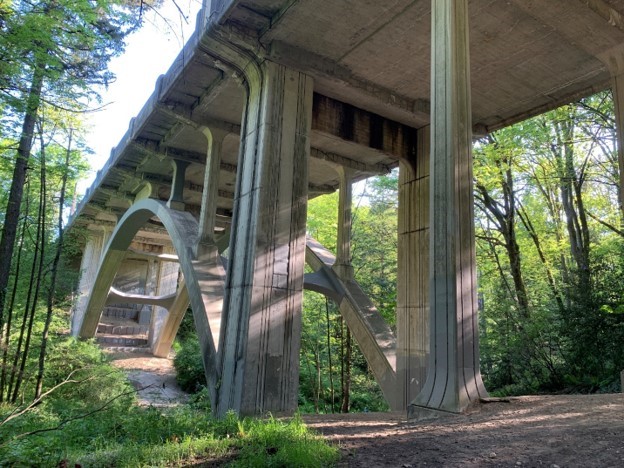
Completing the seismic retrofit of the Cowen Park Bridge (15th Avenue NE) earlier this year made it possible to invest in all the street improvements above, so that buses, bikes, cars, and pedestrians can travel safely across. When we first keep our bridges safe, as recommended by our City Auditor, we can make multimodal transportation investments that are sustainable.
This multi-modal project in the heart of our District extending from Lake City Way down to NE 55th Street will not only repave this deteriorating arterial but also install bike lanes to benefit safe routes to school and the new light rail station opening at Roosevelt next year – all without negatively impacting small businesses. SDOT’s project page (CLICK HERE) contains regular updates. Currently (as of November 19) utility work will be happening between NE 70th and NE 75th Streets, with work crews also moving north toward NE 80th Street. One of the key transportation improvements made for this 15th Avenue NE project was the seismic retrofit of the aging Cowen Park Bridge, which will now enable all modes to travel from Maple Leaf and Roosevelt to the U District and downtown across a stronger, safer path. This enables the rest of the costly improvements along 15th Avenue NE to make financial sense for the long-term benefit of all and highlights a key rationale for investing more in the maintenance of our city’s bridge infrastructure as recommended by our City Auditor.
IN DISTRICT 4
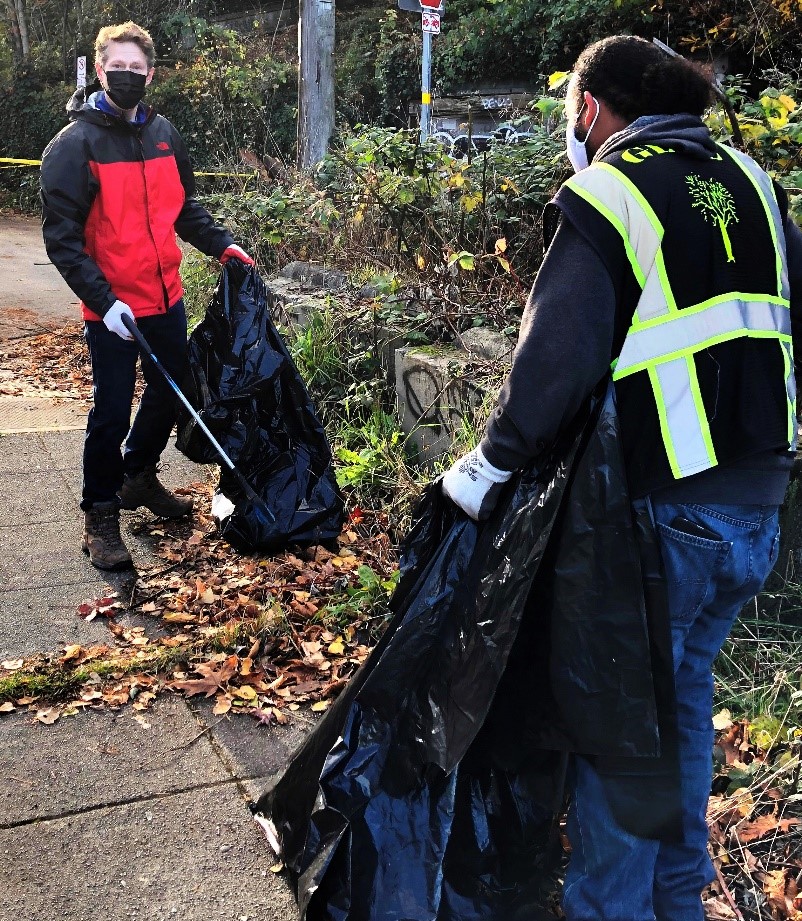
Picking up litter in District 4 last weekend with our Seattle Public Utilities (SPU) crew. I’m glad the Mayor and Council are putting more money into litter pickup for 2021 and we’re getting more service in our District!
Listening to BIPOC small business owners in D4
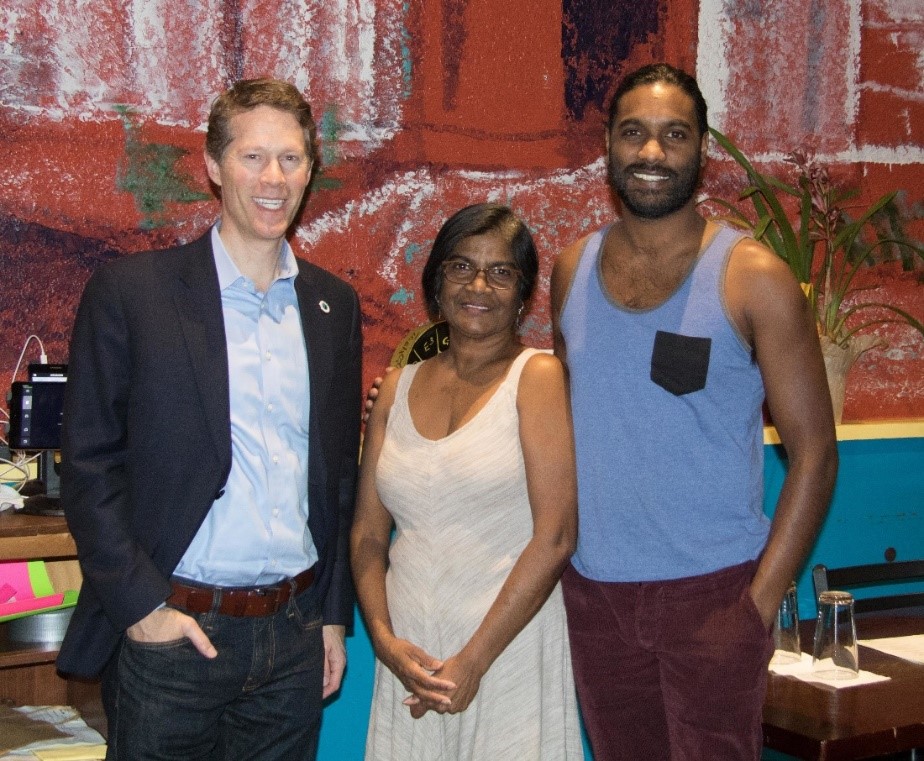
Before masks were needed several months ago, I visited Pam’s Kitchen in Wallingford (formerly in the U District). Recently, she shared her thoughts with me again, along with other BIPOC business owners in District 4.
After the murder of George Floyd by Minneapolis police and subsequent protests and strong calls for revamping public safety and community wellness, I consulted with over 25 Black leaders thus far from academia, advocacy, government, faith organizations, and business.
I also interviewed BIPOC owners of small businesses in our District. I heard views that were both diverse and complex. The cautionary comments of several Black leaders about drastic “defunding” were coupled with concerns about police misconduct, racial profiling, and systemic racism that must be addressed with stronger reforms and effective community programs.
The views expressed were strikingly similar to a June/July Gallup poll:
“Most Black Americans want the police to spend at least as much time in their area as they currently do, indicating that they value the need for the service that police provide. However, that exposure comes with more trepidation for Black than White or Hispanic Americans about what they might experience in a police encounter. And those harboring the least confidence that they will be treated well, or who have had negative encounters in the past, are much more likely to want the police presence curtailed.”
In Gallup’s polling published in August, they found similar results:
“While Black Americans overwhelmingly support major changes to law enforcement, their greater need for security in their own community helps explain the complexity of their relationship with the police in their neighborhood. It is possible to both have less positive experiences with police and desire a police presence for safety and security.”
Admittedly, most of the Black leaders with whom I spoke had long-standing histories and relationships across Seattle. So I knew it was important to hear from Black youth in Seattle, particularly those who marched nightly the past several months. I hear their frustration with — and distrust of — elected officials who, for years, have voted to expand police budgets without ensuring that bad cops are held accountable for unjustly harming Black and Brown people. They also want more investments in prevention programs and the vitals of affordable housing, education, and health care. They are right.
To reconcile these various viewpoints, I continue to believe Seattle political leaders can find common ground in dismantling the institutional racism embedded in the 100-page contract with the police union and save money, rather than focusing solely on the police budget and staffing levels. If that inflexible contract is revamped, we can maintain adequate levels of police staffing, save money to reinvest in BIPOC communities for the long-term, and expand existing reforms. My votes on the budget this week include support for additional investments in Seattle’s BIPOC communities. But the hard work–and longer-lasting benefits–will come when the city government labor negotiators actually revamp the police union contract.
Public Safety Survey
As part of the ongoing effort to gauge community perceptions on public safety, I encourage you to take Seattle University’s Public Safety Survey (CLICK HERE). For an Op Ed about the public safety survey, CLICK HERE.
Join D4 Community Councils and Groups
Especially in these trying times, community connections are critical to a functioning and vibrant District 4. I encourage folks to join their Community Council to connect. For a list CLICK HERE.
D4 Neighborhood Matching Grant Awardees
I am pleased to share the District 4 Neighborhood Matching Fund Awardees for 2020:
- $13,552 to Friends of Picardo Farms P-Patch for Accessibility Improvements at the Picardo P-Patch to rebuild and enlarge existing accessible garden beds, add specialized garden tools and storage, and enhance critical pathways to increase accessibility.
- $43,000 to Eli’s Park Project for Phase 3 of Burke-Gilman Park Renovation to design and fabricate custom bike stations, sculptural elements, and educational panels. The park renovation will create an accessible, inclusive, nature-based park for people of all ages and abilities.
- $20,819 to Magnuson Children’s Garden All Are Welcome Mural to work with youth residents of Magnuson Park housing and surrounding neighbors to design and create murals that create a strong ‘All are Welcome in the Garden’ message.
- $30,095 to The U District Partnership for U District Mural Program to install three new works of public art in different areas of the neighborhood.
Eat, Drink, and Shop at the 43rd Street Junction!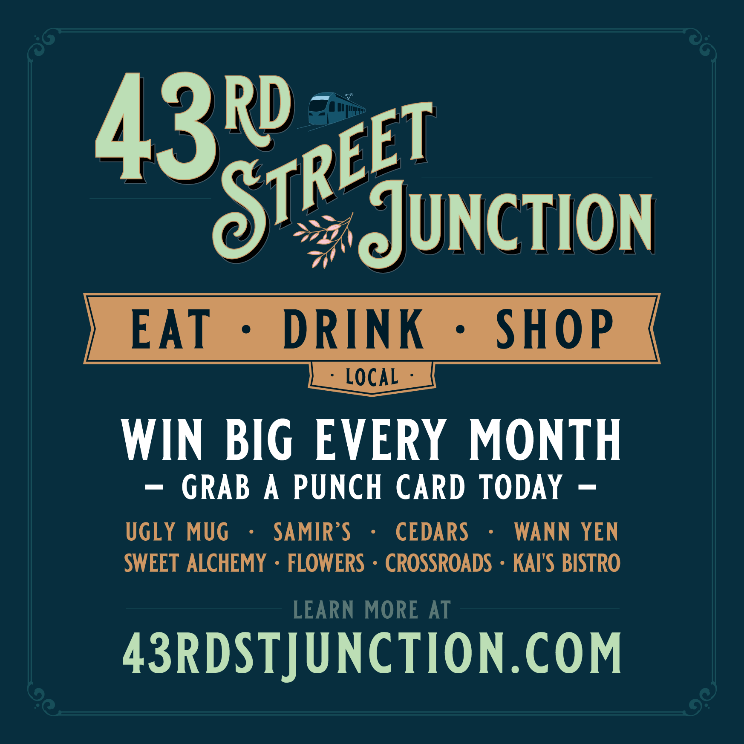
Come explore the future home of the U District light rail station and support your local businesses! From artisan ice cream to authentic Lebanese cuisine, the NE 43rd Street Junction has a yummy variety. Consider getting a 43rd Street Junction punch card today! During this upcoming holiday season, shop local and visit the University District Partnership’s new website: udistrictseattle.com.
Seattle Parks and Recreation invites community to review conceptual design for new Green Lake Community Center and Pool
Seattle Parks and Recreation invites the community to review the conceptual design for the new Green Lake Community Center and Pool. Please join the Online Open House between November 16 and December 4, 2020 at glcc.infocommunity.org. By visiting the Online Open House, you can provide feedback to the design team and share what activities/amenities you would like to see in the center and pool. SPR is working to secure funding for the facility and anticipates the new community center and Evans Pool could start construction in 2025. (While Green Lake is in District 6, we know it also serves residents from Districts 4 and 5.) For more information CLICK HERE. While we’re excited about Green Lake, we also want to make sure our Parks Department gives our Magnuson Park Community Center more support — especially to benefit the low-income children who call Magnuson Park home.
City of Seattle seeks volunteers for Community Technology Advisory Board
The City of Seattle is looking for volunteers to join the Community Technology Advisory Board (CTAB). The 10-member board and its committees help guide city strategies and investments in information and communications technology. CTAB members advise Seattle’s Information technology department, the Mayor and City Council on a range of issues, including broadband, digital equity, mobile and web based city services, privacy, community engagement, small cell/5G deployment, and access to technology for students, families, and underserved residents. The Transportation Committee that I chair includes oversight of the City’s Information Technology Department, which is overseeing our Internet for All Action Plan. To apply by the deadline of November 30, 2020 CLICK HERE.
COVID-19 UPDATES AND RELIEF
The troublesome spike in new COVID cases increases risk to health, safety, and economic recovery. I know it also deepens the sadness and worries we have already experienced. I remain upbeat about our long-term future and I want to share some information from Governor Inslee’s office as we enter the holiday season:

We know the holiday season this year will look different. Check out these ideas for safer gatherings, including virtual options and a checklist to help plan a safer outdoor gathering.
At this time, gathering with people we don’t live with—even friends and family—may spread COVID-19. The more people we interact with at a gathering and the longer that interaction lasts, the higher the risk of becoming infected or infecting others. The safest action is to avoid gatherings and find different ways to celebrate this season. But if you are considering a gathering, here is a helpful guide to have an (awkward, but important) conversation with family or friends:
The Governor established new statewide restrictions last week.
- Indoor social gatherings are prohibited with people outside your household unless you quarantine for 14 days prior OR seven days with a negative COVID-19 test
- Restaurants and bars are closed for indoor service. Outdoor dining and to-go service are permitted. Table size is limited to five people.
- Fitness facilities and gyms are closed for indoor operations. Outdoor activities are permitted, but limited to five people.
- Religious services are limited to 25% capacity or 200 people, whichever is fewer. No ensemble performances or congregational singing, and face coverings are required at all times.
Where to Find More Updates on COVID and Relief
Source: King County Public Health
The Seattle City Council continues to update its COVID-19 webpage which includes resources supporting workers, childcare, small businesses, and tenants/landlords. You can also visit Mayor Jenny Durkan’s centralized COVID-19 webpage, as well as the Mayor’s blog for additional updates. Additionally, our Seattle Office of Immigrant and Refugee Affairs (OIRA) has been translating and sharing information on COVID-19 in several languages. For links to OIRA’s fact sheets and other translated materials, go to their blog. And for the latest from Public Health Seattle-King County, you can visit their website to track our region’s response to the virus.
- Learn more about safer holiday celebrations at HERE;
- Washington State’s new restrictions at HERE; and
- COVID-19 statistics for Seattle and King County at HERE.
- If you experience any symptoms, sign up for a free COVID-19 test HERE.
City of Seattle Opens Applications for $4 Million in Small Business COVID Relief 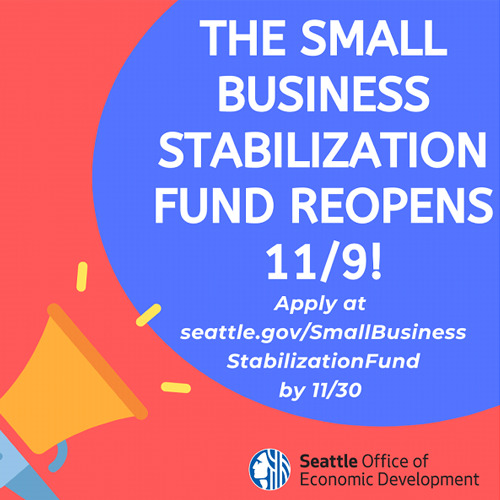
The City is now accepting applications for Small Business Stabilization Fund grants provided by the Office of Economic Development (OED). The Small Business Stabilization Fund will accept applications until Monday, November 30, 2020. To be eligible for a grant, a small business or non-profit must have 25 or fewer employees, be located within Seattle city limits, and have an annual net revenue at or below $2 million. For more information on all eligibility requirements, visit OED’s website. Learn more about the Small Business Stabilization Fund, or CLICK HERE to begin the application.
Seattle City Light COVID Relief for Small Businesses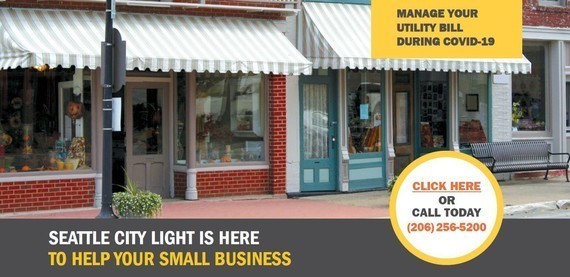
City Light is helping small businesses and nonprofits impacted by COVID-19 with the following services:
- Bill deferral
- Free virtual energy assessment
- Limited time: Free energy efficient equipment installation
Complete the City Light Small Business Support Form or you can also contact our Business Customer Service Advisors for assistance at (206) 256-5200 or SCL_BusinessServices@seattle.gov. Notice: If you have closed your business and need to permanently cancel your service, you must close your City Light account, or you will continue to receive bills. Please contact them to send notification.
The Seattle Public Library Launches Tutor.com During COVID
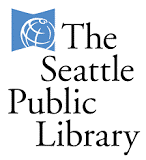 The Seattle Public Library is launching Tutor.com! Tutor.com has over 3,000 highly vetted expert tutors, who can help youth with schoolwork, tutoring and academic coaching in a variety of subjects in a safe and secure online classroom. 1-1 help is available in math, writing, science, history, foreign languages, college essay writing, Advanced Placement (AP) courses and more.
The Seattle Public Library is launching Tutor.com! Tutor.com has over 3,000 highly vetted expert tutors, who can help youth with schoolwork, tutoring and academic coaching in a variety of subjects in a safe and secure online classroom. 1-1 help is available in math, writing, science, history, foreign languages, college essay writing, Advanced Placement (AP) courses and more.
Go to www.spl.org/VirtualTutoring and log in with your library card or your Library Link number to connect! Here are links to the English Flyer, Spanish Flyer, and additional instructions on how to connect.
WE WANT TO HEAR FROM YOU

City Council Meetings on the Internet
Listening: Even though City Council is not currently holding meetings in person in order to follow public health guidelines, you can still follow along by listening on your computer or phone by CLICKING HERE. You can also listen on your phone by calling 253-215-8782.
Commenting: You can also submit public comment by sending an e-mail to me at Alex.Pedersen@seattle.gov or to all 9 Councilmembers at council@seattle.gov. Please remember to add “For City Council Meeting” in the comments. Now you can also phone into the meeting to speak directly to the Council live. For the instructions on how to register and call in, CLICK HERE. Sign up begins two hours prior to the meeting start time.
Virtual Meetings with Your Councilmember Pedersen
I continue to schedule virtual in-district office hours, so we can chat by telephone or via Skype. Please continue to sign up through my website or by CLICKING HERE so I can hear your ideas, concerns, and requests. You can also just send an e-mail to alex.pedersen@seattle.gov.
For previous e-newsletters, visit my blog by CLICKING HERE.
We will get through this together, Seattle.
With gratitude,

Councilmember Alex Pedersen
Seattle City Council, District 4
Email: Alex.Pedersen@seattle.gov
Find It, Fix It
Posted: November 23rd, 2020 under Councilmember Pedersen


